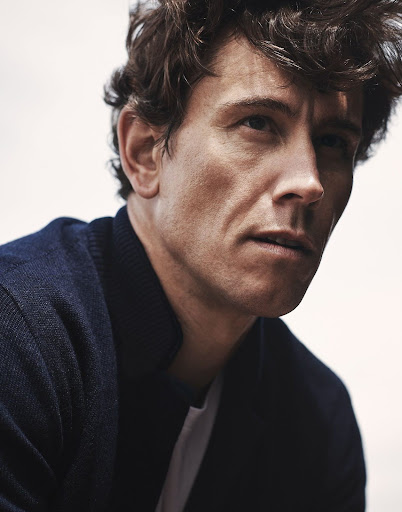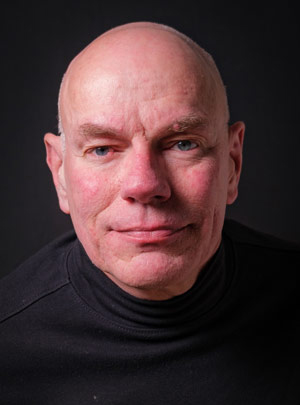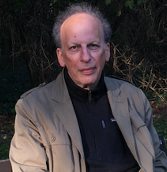Festival Speaker Series
The Impact of Generative AI and the Future of Visual Storytelling
Tuesday, April 2, 7:30 pm ET via Zoom
Online discussion with Stephen Hart, Michael Christopher Brown, and Lauren Walsh. Moderated by Fred Ritchin

AI-generated image from DALL-E 2. Prompt: Documentary style images of Gaza.
This panel will explore the transformative intersection of generative AI and photojournalism, documentary photography and other forms of visual storytelling. Examine how advanced algorithms and machine learning techniques are reshaping the landscape of capturing and conveying real-world narratives. Join us for insightful discussions on the ethical considerations, creative possibilities, and challenges posed by AI-generated imagery in the context of creating authentic and impactful storytelling. This conversation engages experts and practitioners as we navigate the evolving dynamics of this important topic. (The first draft of this text was composed by ChatGPT)
Michael Christopher Brown
 Born and raised in the Skagit Valley, a farming community in Washington State, Michael Christopher Brown (MCB) has been widely published internationally, is a former photographer at Magnum Photos and a frequent contributor to publications such as The New York Times Magazine and National Geographic Magazine, where has worked as a photographer since 2004.
Born and raised in the Skagit Valley, a farming community in Washington State, Michael Christopher Brown (MCB) has been widely published internationally, is a former photographer at Magnum Photos and a frequent contributor to publications such as The New York Times Magazine and National Geographic Magazine, where has worked as a photographer since 2004.
Brown became known for his pioneering use of the iPhone as a primary reporting device in conflict zones, documenting some of the most pressing humanitarian crises of our time. His seminal documentation of the Libyan Revolution, a road trip through a war zone integrating imagery, texts, and audio from his phone, led to the short film and monograph Libyan Sugar, which won the Paris Photo First Book Award and the International Center of Photography Infinity Award for Artist’s Book.
After witnessing friends and colleagues die during several near death experiences on frontlines, including his own kidnapping and multiple shrapnel injuries, Brown’s photography became more dynamic, emotional and personal: “Before I was used by photography, now I use photography.”
On assignment, Brown excels at providing unconventional solutions in challenging situations and locations, having spent 20 years working across six continents including conflict areas in the Middle East and Central Africa, mostly in the Democratic Republic of the Congo where he was based for several years. His passion for utilizing natural light follows from his press background and unique ability to quickly deliver strong images in a variety of situations.
Brown was the main character and a cameraman for the Michael Mann directed HBO documentary Witness: Libya. His work was also featured in several other conflict based documentaries including Hondros, Which way is the Front Line from Here? The Life and Time of Tim Hetherington, The Prosecutors and This is Congo.
In 2023, Brown released the novel and controversial AI reportage illustration work 90 Miles. He lives in Los Angeles with his five year old daughter, Poppy.
Stephen Hart
 Stephen Hart started his career as a newspaper photographer while studying math and computer engineering (including AI) at Boston University. He has held positions at United Press International, the Associated Press and Hearst Magazines. While at the AP he was a leader of the team that introduced digital photography, technologies, and new workflows to the then film-based industry. And he was a lead photo editor on two stories, the Soviet Coup attempt and the 1992 Presidential election, that led to Pulitzer prizes in photography for the company.
Stephen Hart started his career as a newspaper photographer while studying math and computer engineering (including AI) at Boston University. He has held positions at United Press International, the Associated Press and Hearst Magazines. While at the AP he was a leader of the team that introduced digital photography, technologies, and new workflows to the then film-based industry. And he was a lead photo editor on two stories, the Soviet Coup attempt and the 1992 Presidential election, that led to Pulitzer prizes in photography for the company.
With his background in computer science and journalism, Stephen is often called upon to speak on issues arising from the mixing of media and tech.
He is currently a principal in the customer success organization with Adobe Systems focusing on higher education. In this role he works with educators with Adobe technology.
Lauren Walsh
 Dr. Lauren Walsh, Professor at New York University and Founder and Director of the Gallatin Photojournalism Intensive, is the author of Conversations on Conflict Photography (2019) and Through the Lens: The Pandemic and Black Lives Matter (2022), co-author of Shadow of Memory (2021) on the Bosnian War, and editor of Macondo: Memories of the Colombian Conflict (2017), among other titles. She is a leading expert on the visual coverage of conflict and crisis, as well as peace journalism. She is a 2023 Fulbright Specialist in photography and ethics.
Dr. Lauren Walsh, Professor at New York University and Founder and Director of the Gallatin Photojournalism Intensive, is the author of Conversations on Conflict Photography (2019) and Through the Lens: The Pandemic and Black Lives Matter (2022), co-author of Shadow of Memory (2021) on the Bosnian War, and editor of Macondo: Memories of the Colombian Conflict (2017), among other titles. She is a leading expert on the visual coverage of conflict and crisis, as well as peace journalism. She is a 2023 Fulbright Specialist in photography and ethics.
Walsh heads media and visual literacy educational initiatives both in the US and abroad, and has led workshops and lectured globally, with an emphasis on ethics and photography, as well as safety and mental health concerns for journalists. She is the lead educator who oversaw the development of media/visual literacy curricula, including focus on generative AI, for the Content Authenticity Initiative.
Fred Ritchin
 Fred Ritchin is Dean Emeritus of the International Center of Photography where he had founded the Photojournalism and Documentary Photography educational program in 1983. He also was professor of Photography and Imaging at New York University for over two decades. Ritchin served as picture editor of the New York Times Magazine (1978-82) and executive editor of Camera Arts magazine (1982-83). He created the first multimedia version of the New York Times newspaper in 1994-95, and then conceived and edited the Times’s first non-linear online documentary project, “Bosnia: Uncertain Paths to Peace,” nominated in 1997 for a Pulitzer Prize in public service.
Fred Ritchin is Dean Emeritus of the International Center of Photography where he had founded the Photojournalism and Documentary Photography educational program in 1983. He also was professor of Photography and Imaging at New York University for over two decades. Ritchin served as picture editor of the New York Times Magazine (1978-82) and executive editor of Camera Arts magazine (1982-83). He created the first multimedia version of the New York Times newspaper in 1994-95, and then conceived and edited the Times’s first non-linear online documentary project, “Bosnia: Uncertain Paths to Peace,” nominated in 1997 for a Pulitzer Prize in public service.
He also conceptualized the Four Corners Project, a software that allows photographers to contextualize their imagery, and more recently created the Writing with Light (wwlight.org) movement along with World Press Photo, Magnum Photos, the National Press Photographers Association, and others, to consider photographers as authors responsible for the integrity of their own work in an age of increasingly manipulated imagery. He also teaches and lectures widely on photography, human rights, artificial intelligence, and alternative media.
His books on the future of imaging include In Our Own Image: The Coming Revolution in Photography (1990), After Photography (2008), and Bending the Frame: Photojournalism, Documentary, and the Citizen (2013). His next book will be The Synthetic Eye: Photography Transformed in the Age of AI, to be published by Thames & Hudson in 2024. He has also written essays in dozens of other books, curated numerous exhibitions throughout the world, including on alternative documentary and art practices, Latin American photography, and most recently on Ukraine after the Russian invasion. He has also worked on human rights campaigns for the United Nations and other organizations including one to end polio globally, another to support the Millennium Development Goals, as well as another to advance the understanding of war crimes. He lives in New York and Paris.
Sponsored by: